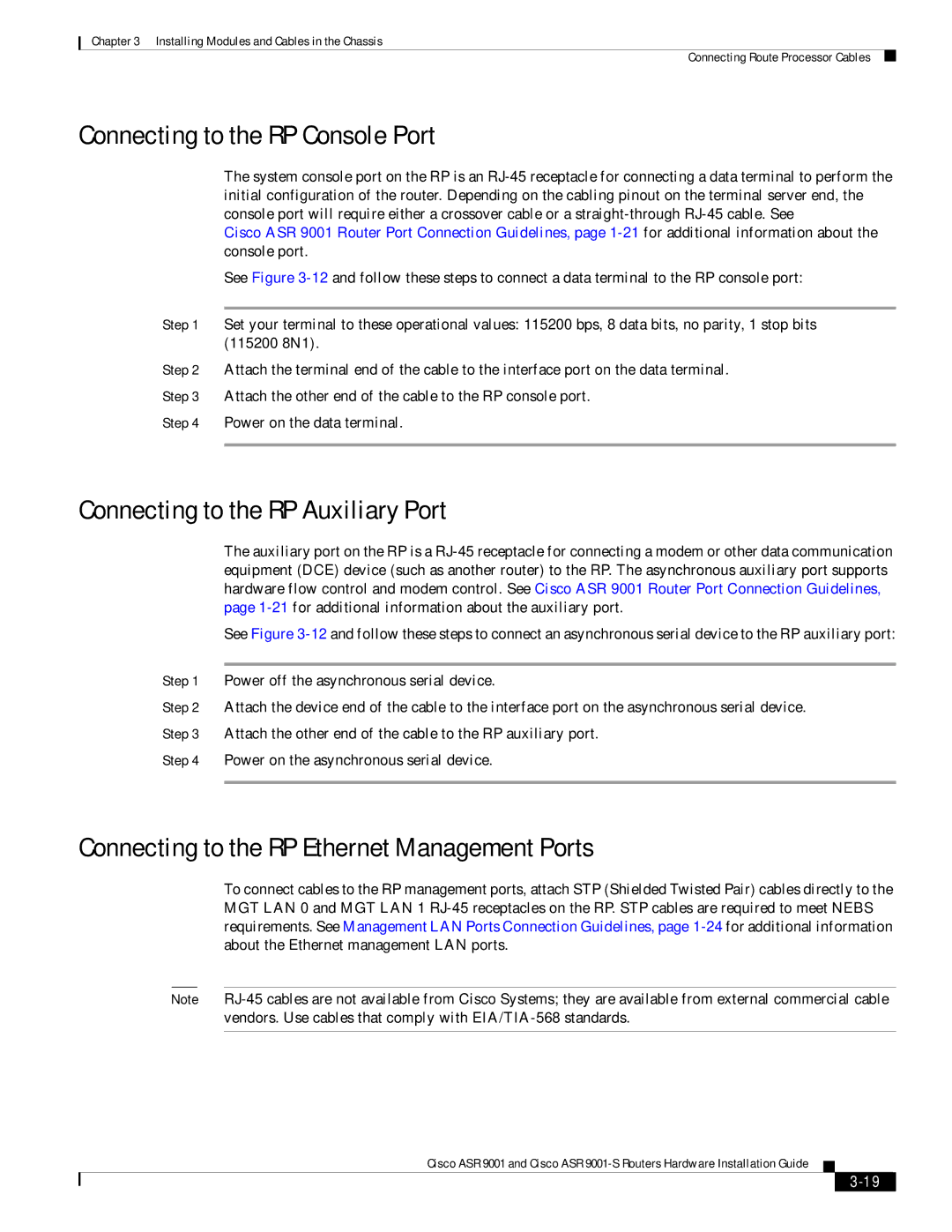Chapter 3 Installing Modules and Cables in the Chassis
Connecting Route Processor Cables
Connecting to the RP Console Port
The system console port on the RP is an RJ-45 receptacle for connecting a data terminal to perform the initial configuration of the router. Depending on the cabling pinout on the terminal server end, the console port will require either a crossover cable or a straight-through RJ-45 cable. See
Cisco ASR 9001 Router Port Connection Guidelines, page 1-21for additional information about the console port.
See Figure 3-12and follow these steps to connect a data terminal to the RP console port:
Step 1 Set your terminal to these operational values: 115200 bps, 8 data bits, no parity, 1 stop bits (115200 8N1).
Step 2 Attach the terminal end of the cable to the interface port on the data terminal.
Step 3 Attach the other end of the cable to the RP console port.
Step 4 Power on the data terminal.
Connecting to the RP Auxiliary Port
The auxiliary port on the RP is a RJ-45 receptacle for connecting a modem or other data communication equipment (DCE) device (such as another router) to the RP. The asynchronous auxiliary port supports hardware flow control and modem control. See Cisco ASR 9001 Router Port Connection Guidelines, page 1-21for additional information about the auxiliary port.
See Figure 3-12and follow these steps to connect an asynchronous serial device to the RP auxiliary port:
Step 1 Power off the asynchronous serial device.
Step 2 Attach the device end of the cable to the interface port on the asynchronous serial device.
Step 3 Attach the other end of the cable to the RP auxiliary port.
Step 4 Power on the asynchronous serial device.
Connecting to the RP Ethernet Management Ports
To connect cables to the RP management ports, attach STP (Shielded Twisted Pair) cables directly to the MGT LAN 0 and MGT LAN 1 RJ-45 receptacles on the RP. STP cables are required to meet NEBS requirements. See Management LAN Ports Connection Guidelines, page 1-24for additional information about the Ethernet management LAN ports.
Note RJ-45 cables are not available from Cisco Systems; they are available from external commercial cable vendors. Use cables that comply with EIA/TIA-568 standards.
Cisco ASR 9001 and Cisco ASR 9001-S Routers Hardware Installation Guide

